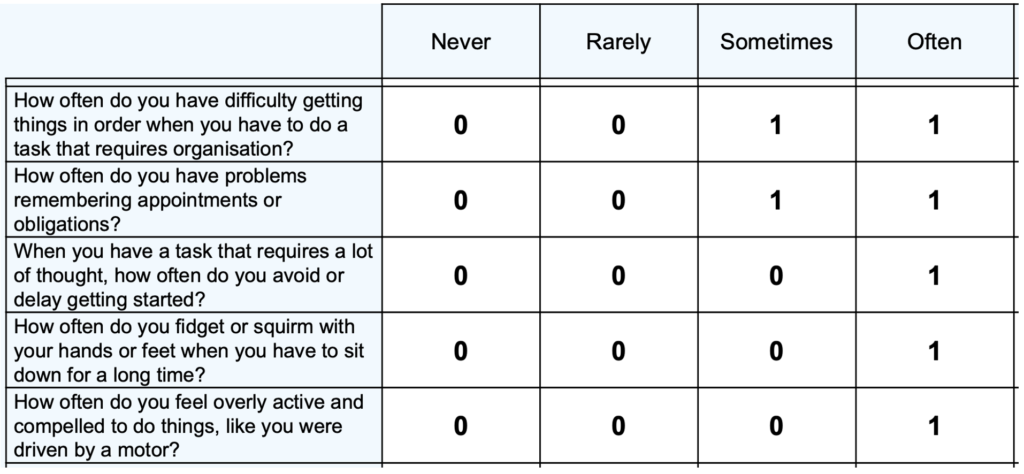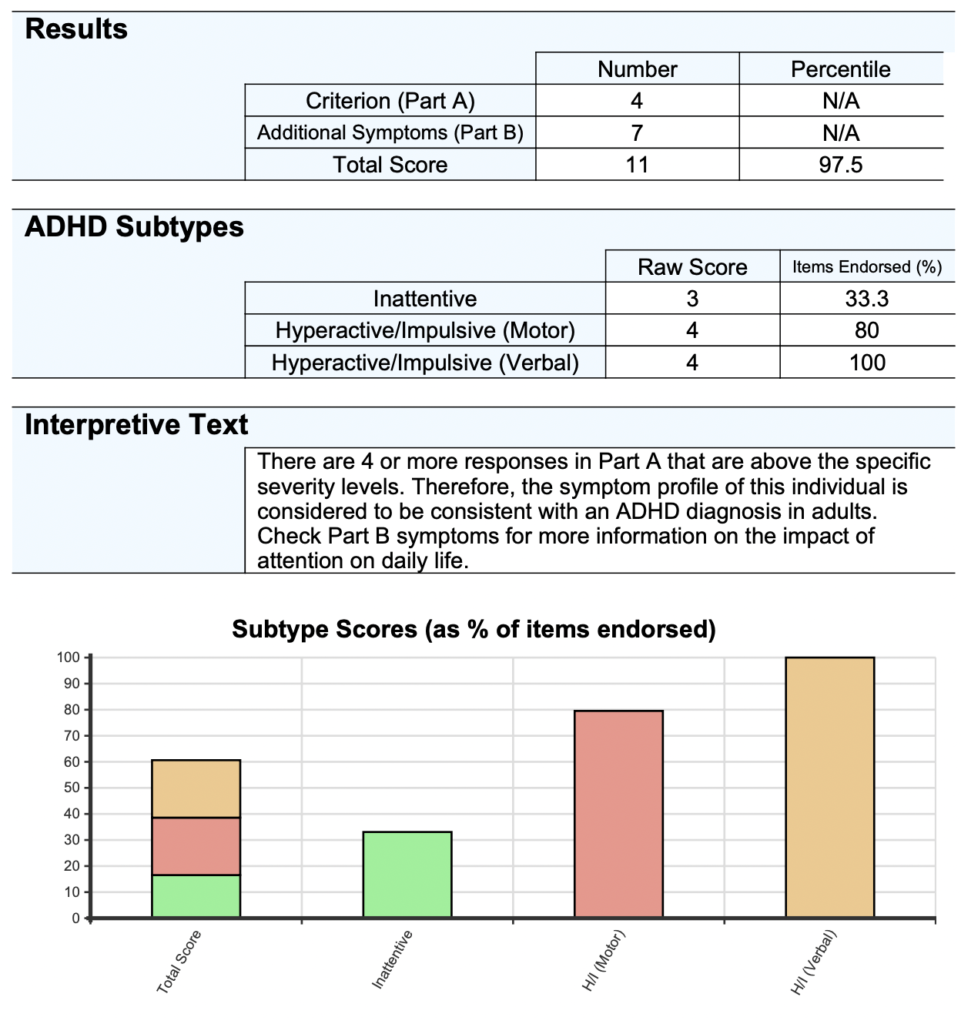Research indicates that approximately 15% of adults in mental health settings meet the criteria for ADHD (Geffen & Forster 2018), yet many adults have not been assessed or diagnosed. Moreover, a majority of those found to have adult ADHD were attending mental health services to treat another disorder. In fact, 54% of people with ADHD had never been diagnosed with ADHD, and two-thirds had never had treatment for ADHD. Therefore, routine screening for ADHD in mental health settings presents a key pathway for clients to get the right diagnosis and therefore an effective intervention.
Thats why NovoPsych has just added the The Adult ADHD Self-Report Scale (ASRS V1.1) to the assessment library.
The Adult ADHD Self-Report Scale (ASRS V1.1) is an 18-item self-report questionnaire designed to assess Attention Deficit Hyperactivity Disorder (ADHD) symptoms in adults (18+). This scale is based on the World Health Organization Composite International Diagnostic Interview (2001), and the questions are consistent with DSM criteria.
When administered in NovoPsych the scoring rules for diagnosis are computed indicating whether the respondent fits the ADHD criteria. In addition, percentiles comparing the score to the typical score among age related peers are presented. For example, the results below show that this respondent’s total score is on the 97.5th percentile, indicating they scored extremely high compared to typical scores in the population.
Scores are also broken down into three subscales, derived via factor analysis:
- Inattentive subscale: difficulty in focussing on details, being organised, remembering appointments, making careless mistakes, and concentrating.
- Hyperactive/Impulsive subscale (Motor): difficulty in sitting still, staying seated, and ability to relax.
- Hyperactive/Impulsive subscale (Verbal): difficulty in controlling how much they are talking, interrupting others, and waiting their turn.
It is noted that the DSM specifies two subtypes (Inattentive and Hyperactive/Impulsive) however psychometric analysis of this scale indicates three distinct symptom clusters.
See here for a full description of ASRS psychometric properties.
To become familiar with the ASRS we suggest you login to NovoPsych and administer it to a dummy client, just so you can learn how to interpret the results before using it with a real client.
|
|
|




